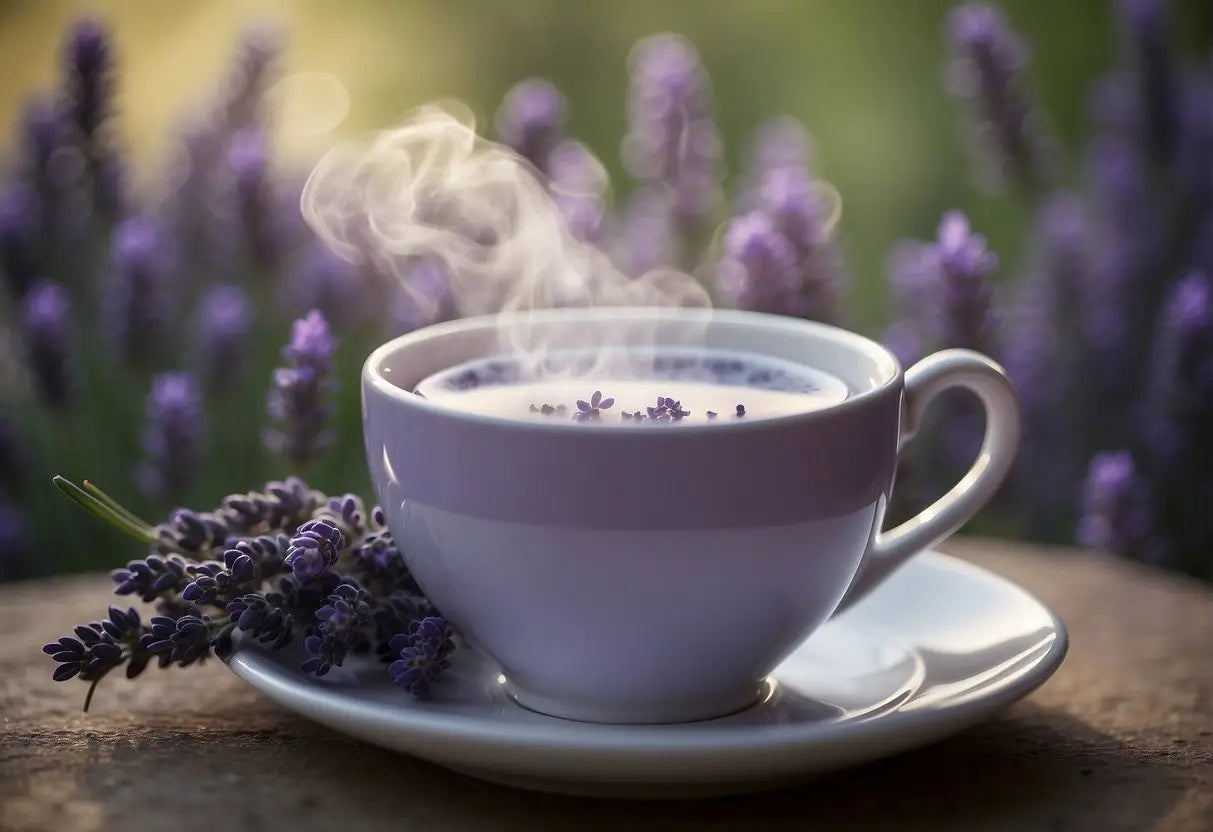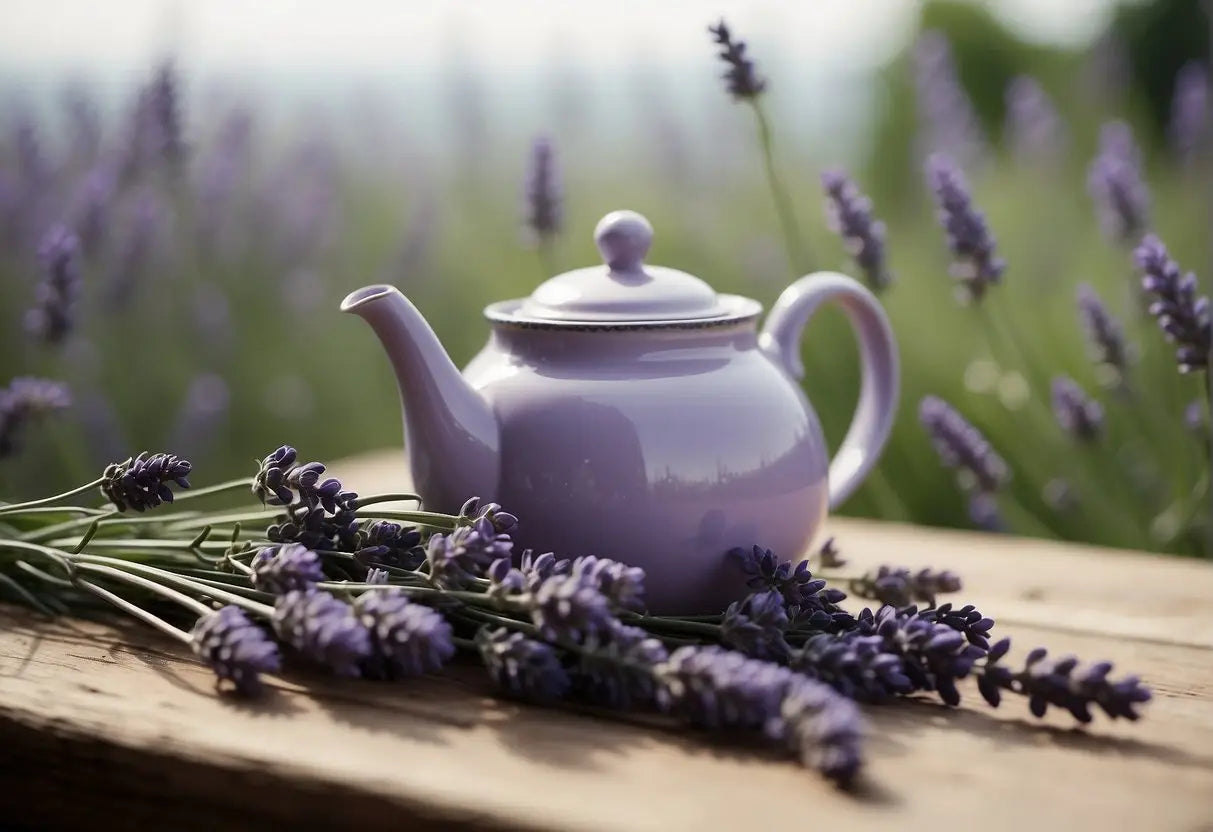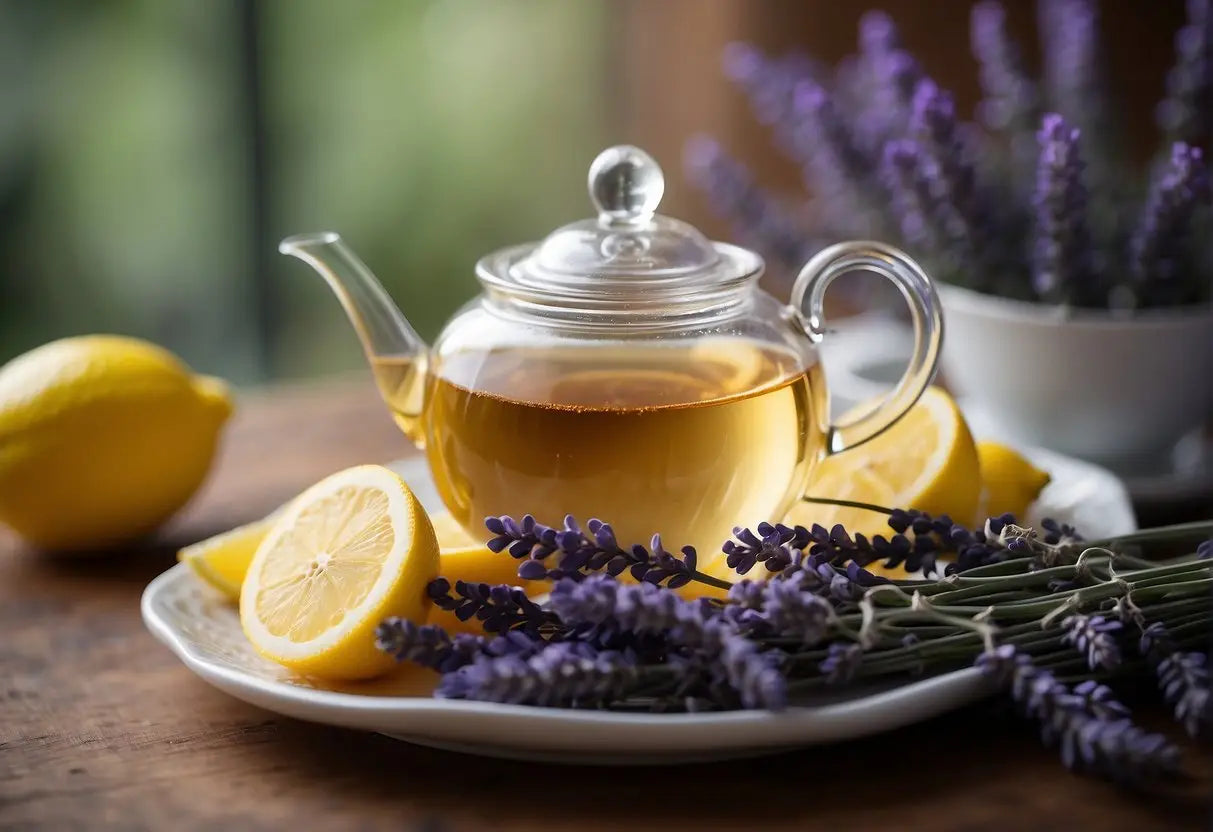Lavender Tea Recipe
Lavender tea is a floral-infused drink, celebrated for its calming properties and unique flavor profile. Through its definition and varied types, you'll understand why it has become a favored choice for many tea enthusiasts.
Definition and Origin
Lavender tea is an herbal tea made by infusing the purple buds of the Lavandula angustifolia plant in hot water. Originating from the Mediterranean region, lavender has a long history of use dating back to ancient Egypt and Rome for bathing, relaxation, and medicinal purposes. The use of these fragrant flowers in tea has become popular for its potential benefits, which include promoting relaxation and sleep, alleviating stress, and even aiding digestion.
Types of Lavender for Tea
When selecting lavender for making tea, the quality and variety matter. Here are some of the preferred types of lavender that you might consider:
Bestsellers
-
English Lavender (Lavandula angustifolia): Known for its sweet, floral aroma and gentle flavor. It's often the prime choice for culinary uses, including tea.
-
French Lavender (Lavandula dentata): It has a slightly sharper taste and is characterized by its toothed leaves. While not as commonly used as English Lavender, it can also be made into tea.
-
Lavandin (Lavandula x intermedia): A hybrid between English and Portuguese lavender, lavandin is stronger in flavor and scent, making it less favored for tea but still an option for those preferring a more robust taste.
Remember, when preparing your tea, organic and culinary-grade lavender buds are recommended to ensure purity and the best flavor.
Health Benefits

Lavender tea offers you an array of health benefits ranging from aiding in relaxation to supporting your digestive system.
Sleep and Relaxation
You may find that drinking lavender tea before bedtime enhances your quality of sleep. The aromatic compounds in lavender have been traditionally associated with the induction of sleep and a reduction in anxiety levels.
- Sleep Induction: A component called linalool may act on your nervous system to promote relaxation.
- Anxiety Reduction: Sipping lavender tea might help alleviate stress and reduce feelings of anxiety.
Digestive Health
The consumption of lavender tea can benefit your digestion in several ways. It's known for alleviating symptoms such as bloating and stomach discomfort.
- Bloating: Lavender has been historically used to reduce gas and bloating.
- Stomach Discomfort: It can help soothe minor digestive issues, potentially calming mild stomach pains.
Antioxidant Properties
Lavender tea is rich in antioxidants, which play an essential role in protecting your cells from damage.
- Cell Protection: Antioxidants in lavender, like polyphenols, help to defend your cells against oxidative stress.
- Free Radical Scavenging: These compounds neutralize free radicals, which can contribute to the aging process and various diseases.
Cultivating Lavender

Before you begin growing lavender for its soothing tea, it's important to understand the specific conditions lavender requires and the proper techniques for harvesting.
Planting and Growth Conditions
Lavender thrives in full sun and well-draining soil with a pH between 6.5 and 7.5.
Lao Ban Zhang
- Zones: Prefers USDA Hardiness Zones 5-9.
- Spacing: Space plants about 18 to 24 inches apart.
- Sunlight: Minimum of 6 hours of direct sun per day.
- Soil: Light and sandy with good drainage.
When planting lavender, select a spot with ample sunlight and use soil amendments to achieve the ideal pH and drainage.
Harvesting Lavender
Harvest lavender when the flowers are in full color but before they are fully open.
- Timing: Morning after dew has evaporated.
- Method: Cut stems above the woody growth.
Remember, frequent harvesting encourages more blooms and a healthier plant for future seasons.
Preparation and Brewing

Creating the perfect cup of lavender tea involves a simple process using fresh or dried lavender flowers. The correct proportions and steps will yield a soothing and aromatic beverage.
Ingredients
- 1 tablespoon of fresh lavender flowers or 1.5 teaspoons of dried lavender flowers
- 8 ounces of boiling water
- Optional: honey or sweetener of your choice
Step-by-Step Brewing Method
- Boil 8 ounces of water in a kettle or pot.
- While the water is heating, place 1 tablespoon of fresh or 1.5 teaspoons of dried lavender flowers into a tea infuser or directly into a teacup.
- Once the water reaches a rolling boil, pour it over the lavender into the cup.
- Allow the lavender to steep for 4 to 5 minutes. Adjust the time based on desired strength; less time for a milder tea or more time for a stronger infusion.
- If you've placed the lavender directly in the cup, strain the flowers out using a fine mesh sieve.
- Add honey or a sweetener if you like and stir gently to combine.
- Enjoy your freshly brewed cup of lavender tea.
Serving Suggestions

Enhancing your lavender tea experience can be achieved through thoughtful sweetening, garnishing, and pairing with complementary snacks.
Sweetening Options
Honey: A natural sweetener that complements the floral notes of lavender. Agave syrup: Offers a vegan alternative with a mild flavor.
Garnishing with Lavender Sprigs
Fresh lavender sprigs add an aromatic touch and elevate the visual appeal of your tea. Ensure they are clean and pesticide-free before use.
Pairing with Snacks
Lavender biscuits: Provide a delightful crunch that echoes the tea's flavor. Scones or shortbread: These buttery treats balance the fragrant essence of your brew.
Storage and Preservation
Proper storage and preservation are essential to maintain the quality and extend the shelf life of dried lavender for tea. Paying attention to these details ensures that your lavender tea retains its flavor and aroma.
Drying and Storing Lavender
To dry lavender, cut the stems when flowers are just about to fully bloom, as this is when they are most fragrant. Tie them in small bundles and hang them upside-down in a warm, dark, and well-ventilated area for 2-3 weeks. Once dry, strip the flowers from the stems and store them in an airtight container away from light and moisture.
- Location: Cool, dark place
- Container: Airtight (glass jars, metal tins, or vacuum-sealed bags)
- Avoid: Direct sunlight, humidity, and heat sources
Shelf Life of Dried Lavender
When properly stored, dried lavender can maintain optimal quality for up to one year. However, its potency diminishes over time, so using it within the first six months is ideal for a more flavorful tea.
| Condition | Shelf Life |
|---|---|
| Optimal | 6-12 months |
| Acceptable | Up to 24 months |
Note: Check periodically for signs of degradation such as loss of color, aroma, or the presence of moisture.
Possible Side Effects

While lavender tea is enjoyed by many for its calming effects, you should be aware of the possible side effects it can have on certain individuals.
Allergic Reactions
You may experience an allergic reaction to lavender if you are sensitive to it. Symptoms can include:
- Itching
- Skin rash
- Hives
- Difficulty breathing
If you experience any of these symptoms, you should discontinue use and seek medical attention.
Interactions with Medications
Lavender tea might interact with certain medications. Be cautious if you are taking:
| Medication Category | PotentialInteraction |
|---|---|
| Sedatives | Lavender may enhance the drowsy effect. |
| Blood Thinner | Lavender could potentially increase bleeding risk. |
It is essential to consult with your healthcare provider about consuming lavender tea if you are on any medication.
← Older post Newer post →











